Unlocking a Love for the Desert
Awe and Wonder in the Southwest
I hope you can stick with me to the end of another long post. I believe it’s worth your time.
I’ve just returned from a huge, life-changing two-week photography trip to the desert southwest.
This trip came about because of my friend Bill. Bill wanted to come out to this part of the world with me to see slot canyons. Because I’d never been to the well-known slot canyons, I didn’t feel confident enough to take him myself. Plus, I wanted him to see some of the places my good friend Kurt had shown me out here on workshops that we co-led in previous years. With that in mind, I directed him towards our Best of Utah workshop.
Only, Kurt had no interest in going to any of the well-known canyons. He’d seen them before and heard that the experience of visiting was no longer a good one. Rumors of massive crowds of tourists being pushed through the canyons each day with no time to stop and make photos, along with the fact that they weren’t allowing tripods, convinced him that this was something he wanted no part of. I had to admit, it sounded like a zoo. Only, I still wanted to see what all the fuss was about.
With that in mind, I split the trip into two sections. The first section would be Kurt’s traditional workshop, focusing around the Moab and Hanksville areas. Kurt knows and loves this area, and it is always wonderful seeing locations through his eyes. He took me here for the first time just a few years ago.
The second part of the trip would be a more freestyle exploration by myself, Bill, and two other companions. On this leg, we would visit the slot canyons, but also a range of other places. These are places I’ve always wanted to see, but have been warned off by my photography peers because they are so popular. I understand their point of view, the desert southwest is a massive place and there are many locations that are more intimate and open to personal exploration. That said, I wanted to see what makes these icons so special.
I wanted to learn to learn how to love an area that I had struggled to absorb.
I must admit that, at first, I didn’t quite get it. The desert was strange. It looked hostile and even ugly in places. There were a lot of rocks, and dirt. Of course, I saw the beauty, too, the staggering rock formations, the lone trees, the spectrum of colors in the land reflecting those in the sky.
I just didn’t know how I really felt about it. It was too different, too foreign from what I knew and loved, the lush forests and rocky coast of New England.
This trip has completely changed my mind.
It has changed me, honestly.
I can’t recall a more productive and stimulating stretch of time behind the camera.
I finally get it.
It’s mostly been about moving past the bewilderment and into that state that drives so much of my work, the state of being in awe of what’s in front of me.
It also helped to see locations not just through the eye’s of my good friend Kurt, or from photos I’d seen online, but through my own eyes. I had to find out what about these places I really liked and wanted to capture based on my own experiences, which were few and far between.
We kicked off with Kurt and the larger workshop group around Moab with explorations of Arches and Canyonlands National Parks, along with many lesser-known spots in the area.
Here’s a well-known view from Arches National Park in deep twilight, with some stars streaking over the mountains under cotton candy skies. This is one of our favorite times in the desert, when the red sandstone positively glows!
Later on, we found a perch high on a canyon wall looking out at a beautiful sunset view. I found a lone juniper, not hard to spot around here, and used it as my subject and captured the sun shining through the tree on this cool wavy sandstone in my foreground.
Lone trees on cliff edges kinda became a thing on this trip. I found another one at a different location a bit later on, this time at sunrise.
We then made our way over to Hanksville. This area is becoming very popular with photographers, but we still manage to find places that no one else has ventured.
The dirt out here is honestly the consistency of kitty litter, and walking around in it is pretty strange. As it erodes, it makes some fantastic patterns, which were fun to capture at sunset with a zoom lens.
As the sun started hitting the land, I turned to photograph Bill against this crazy backdrop.
Although the desert is barren in most places, where there is water, an explosion of growth can be found, especially the majestic cottonwood trees, as well as rabbit brush and tamarisk, whose wispy fronds and branches create amazing textures. Our favorite way to capture them is with some backlight shining through.
There are also a number of fascinating canyons in the area. This little slot section of a one canyon is only about 12 feet tall and maybe 20 yards in length, but at the final section there’s a great photo opportunity. This glow is totally real! What you are seeing is light reflecting off the red sandstone in the back and off of blue sky in the front. It’s mesmerizing!
The other section of the canyon is much larger, but still has an excellent section where the walls nearly meet overhead, creating deep darkness that allows some really incredible things to happen with the light that manages to find its way in. In the frame below, a beam of light turns a corner as it reflects off the walls.
We were very surprised to find a sunbeam when we came through, and one of the students stopped to stare in wonder.
Later we visited a much more famous canyon, but this place is still a favorite thanks to the lack of crowds and diversity of terrain. This is more what Kurt loves, and as you can see, Kurt’s a smart guy.
We then went to Mars.
Well, not really. But that small building you see in the upper right actually is the home of the Mars Desert Research Station, a NASA facility. This landscape is like no other.
The light was pretty spectacular again, thanks to high clouds catching the colors of sunset.
These are known as bentonite hills, and the colorful striations are one of the wonders of nature and geology.
Our last morning was spent at a popular overlook above these bentonite hills.
This photographer was perched a little too precariously for my comfort, but he was very nice and made it back safely. I enjoyed including him in the image.
Looking back at where we started this leg of the trip, we saw some beautiful cloud formations above the iconic butte.
The sun progressed, and started hitting the top of the butte itself.
From there, I set off with my friends Bill and Ed on an excellent adventure, exploring a range of new locations, many of them icons of the photography world. These are places I’ve always wanted to see, but have been warned off by my photography peers because they are so popular. I understand their point of view, the desert southwest is a massive place and there are many locations that are more intimate and open to personal exploration. That said, I just needed to see what makes these icons so special.
The first night on this side trip brought us down to Monument Valley. We were exhausted and the clouds had moved in, so we actually gave up on sunset, had a nice dinner, and planned on going to bed early.
Nature had other plans.
Can you believe it? It was even more incredible standing there.
Check out this image below, where you can easily make out the Andromeda Galaxy, what looks like a fuzzy star at the top of the photograph, the Pleiadies, an open star cluster that some people mistake for the little dipper, on the right, along with the northern Milky Way stretching up over the famous ‘mitten’. Some high clouds and contrails threatened, but never did obscure the powerful and bright aurora.
What a night!
I’ll wrap up the first half of my account here, because it just kept going.
We visited White Pocket, Antelope Canyon, Zion, and Bryce after this. I’ll share more about that part of the trip soon.
Because I had such a great time, I’m considering putting together a small group tour here in November 2026. This would be limited to myself and five students. Right now, I’m thinking of a ten day trip. Two days each in Moab, Hanksville, Page, Monument Valley, and Zion.
If you are interested, let me know and I’ll put you on the early notification list once I have everything arranged. I want to share the experience I just had with others.
I can’t guarantee northern lights, though ;-)


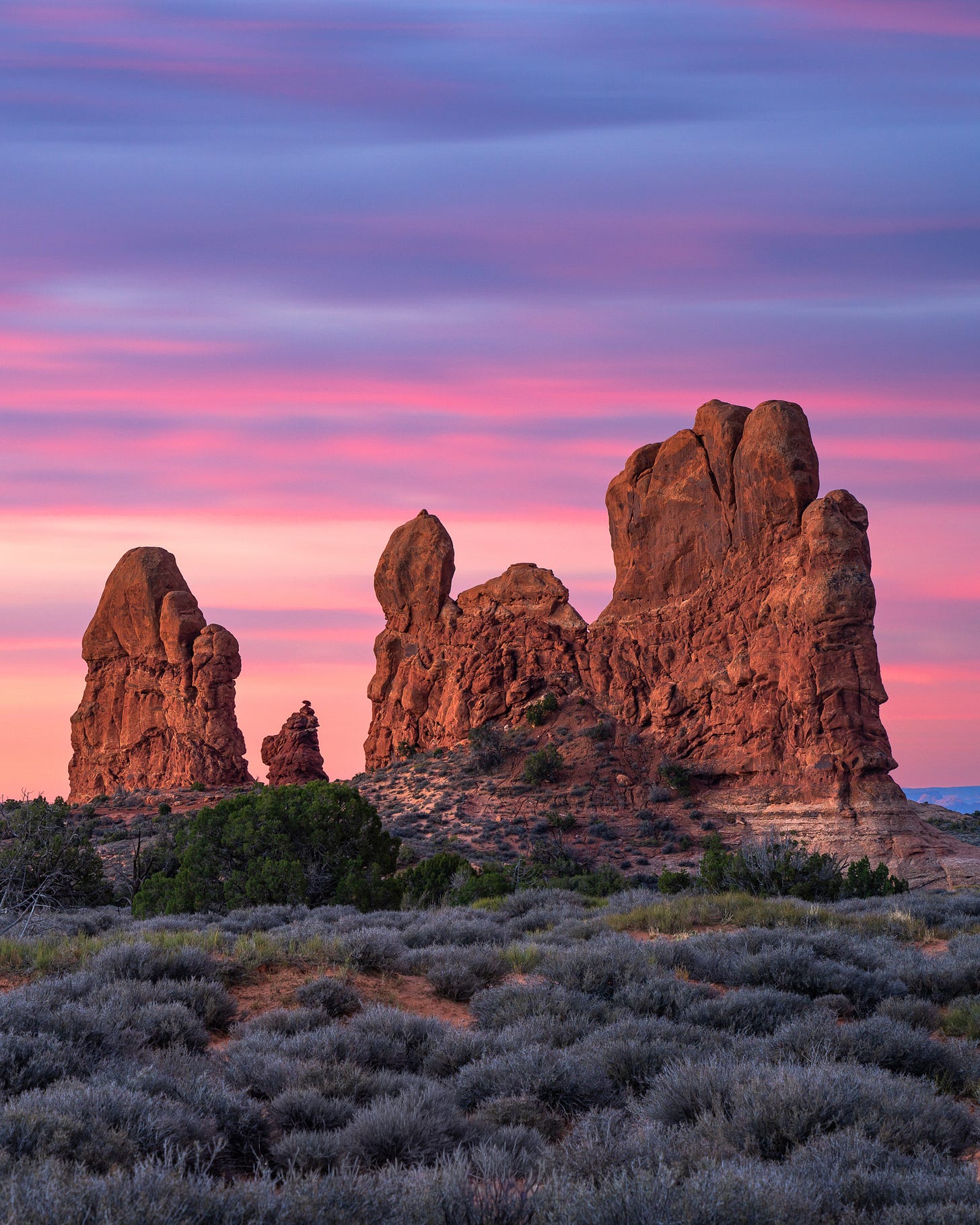

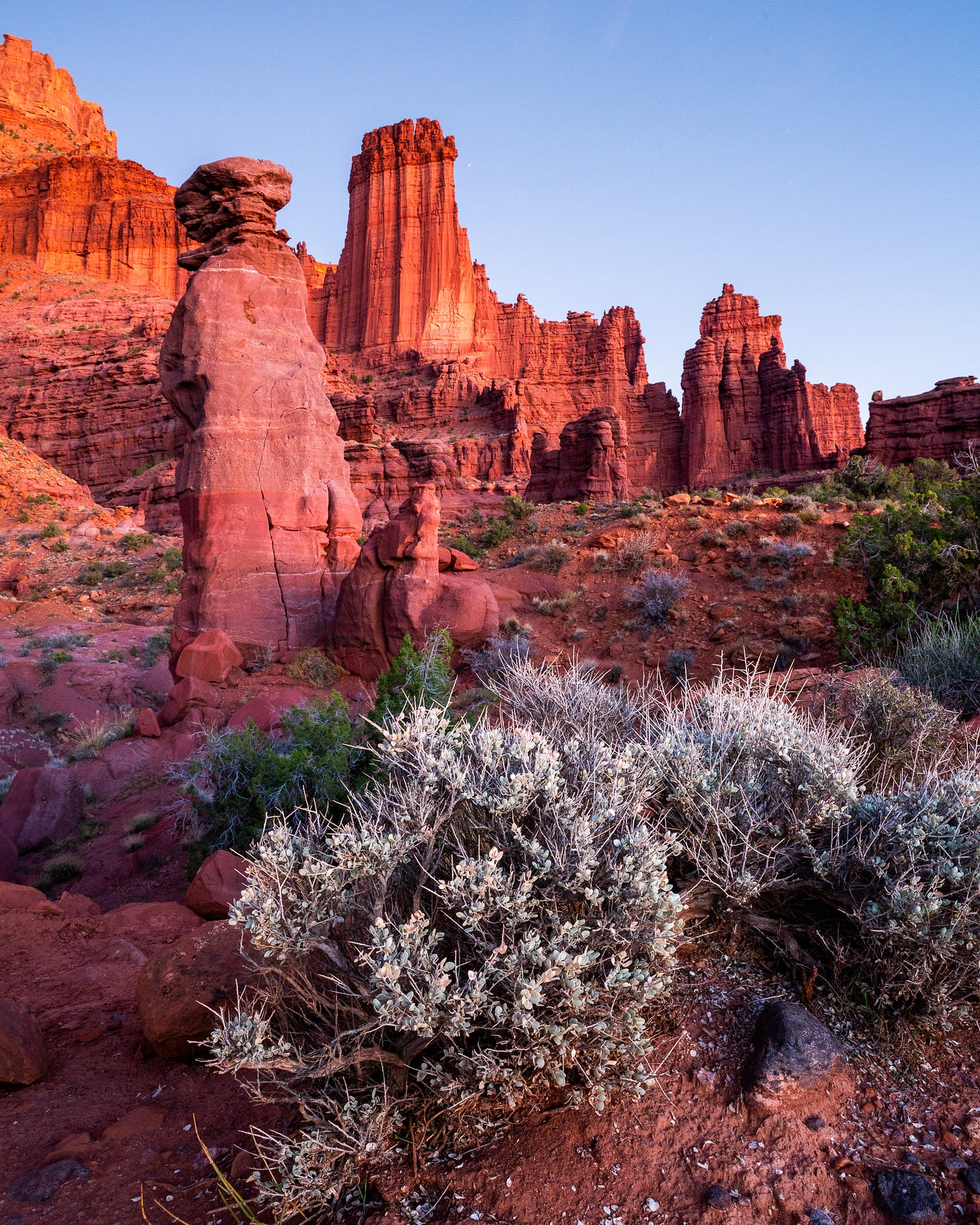
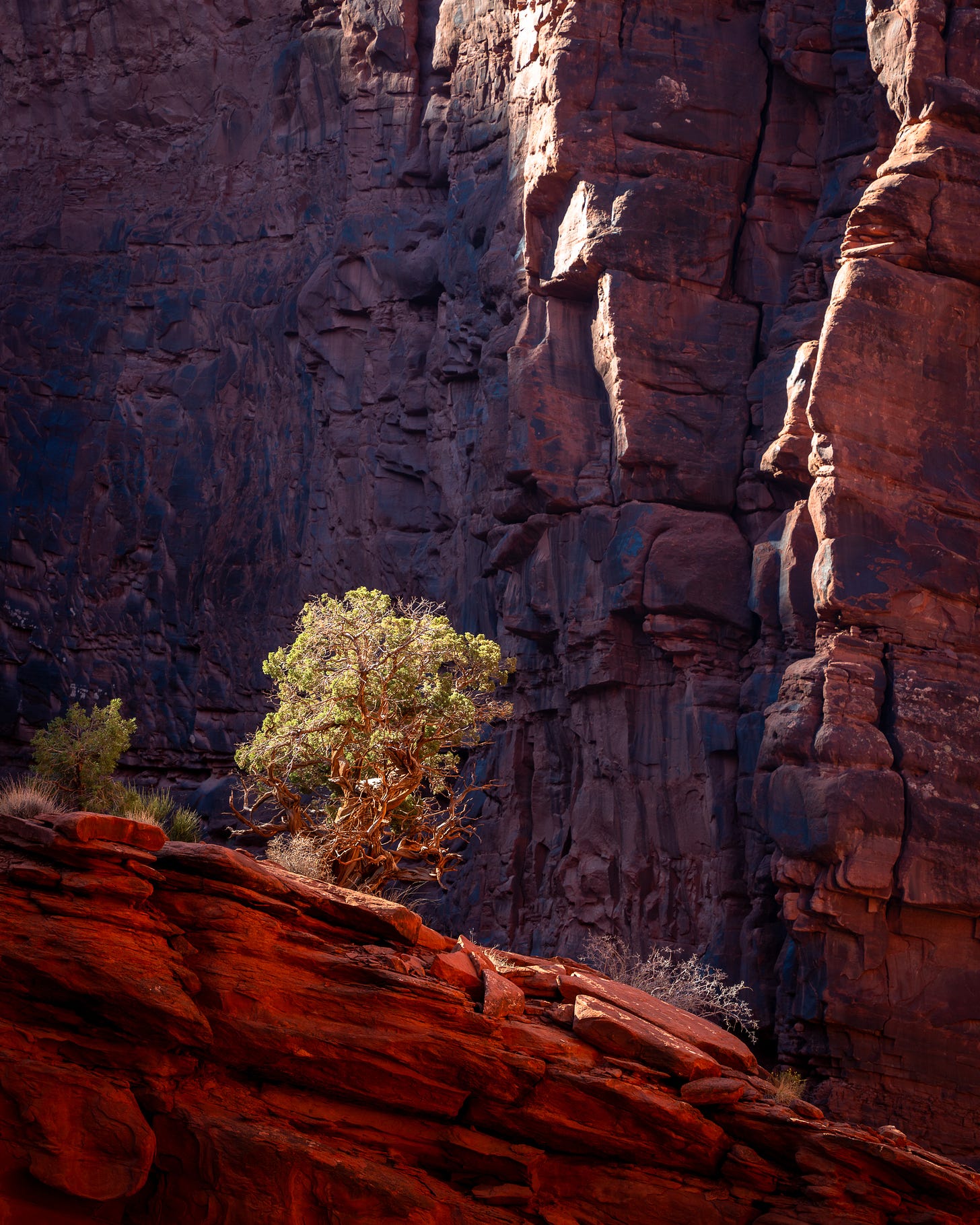


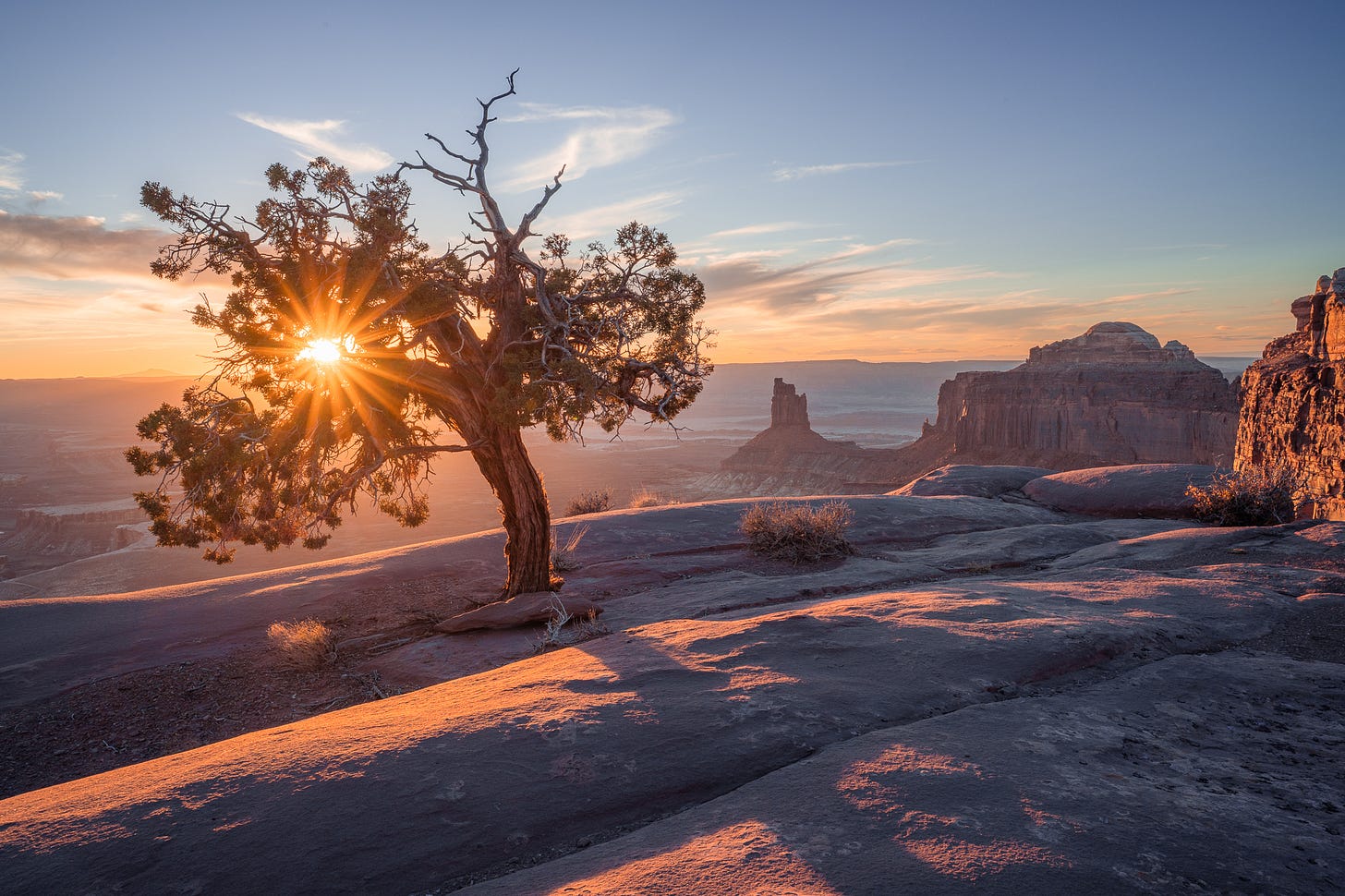

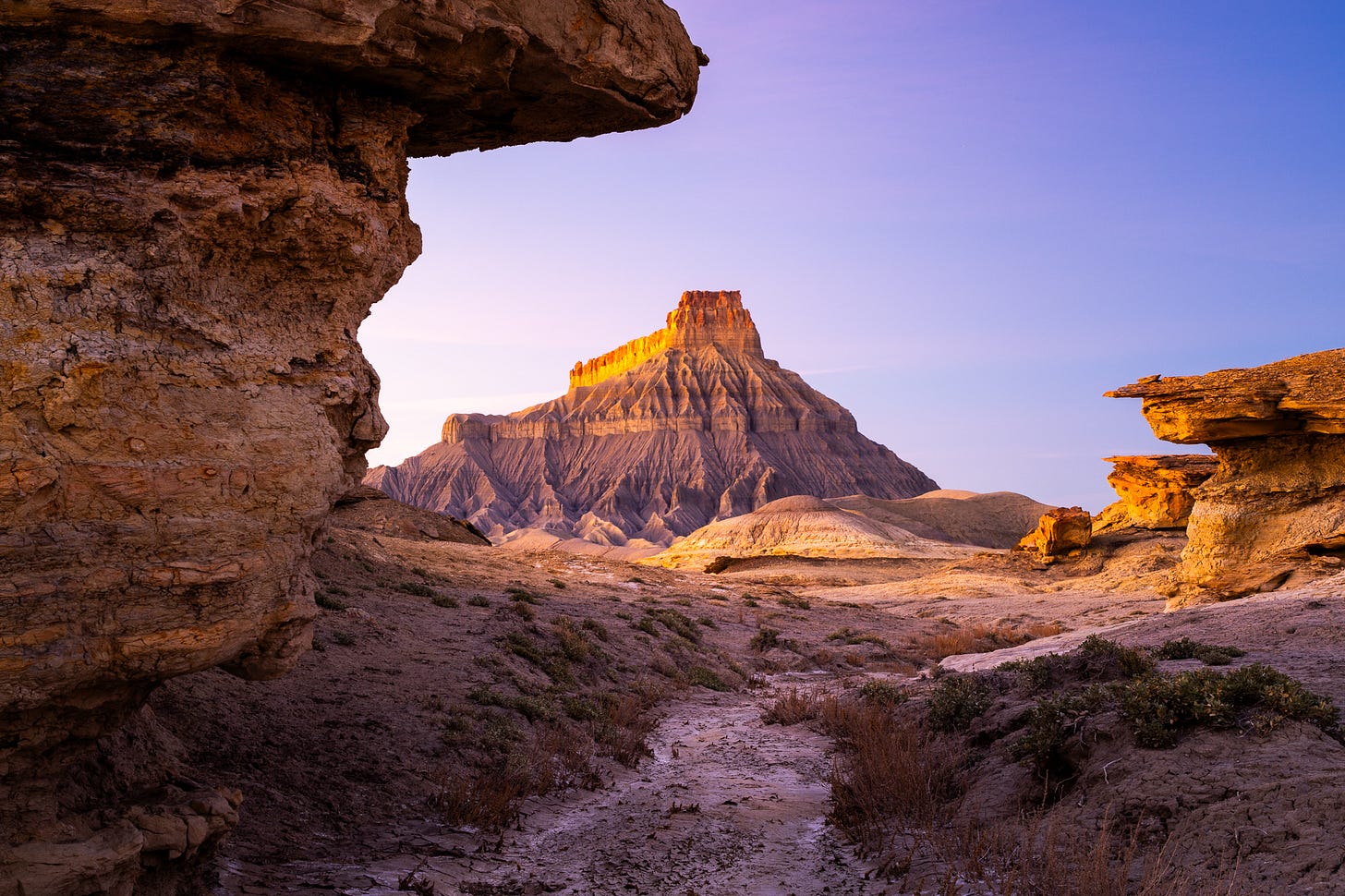
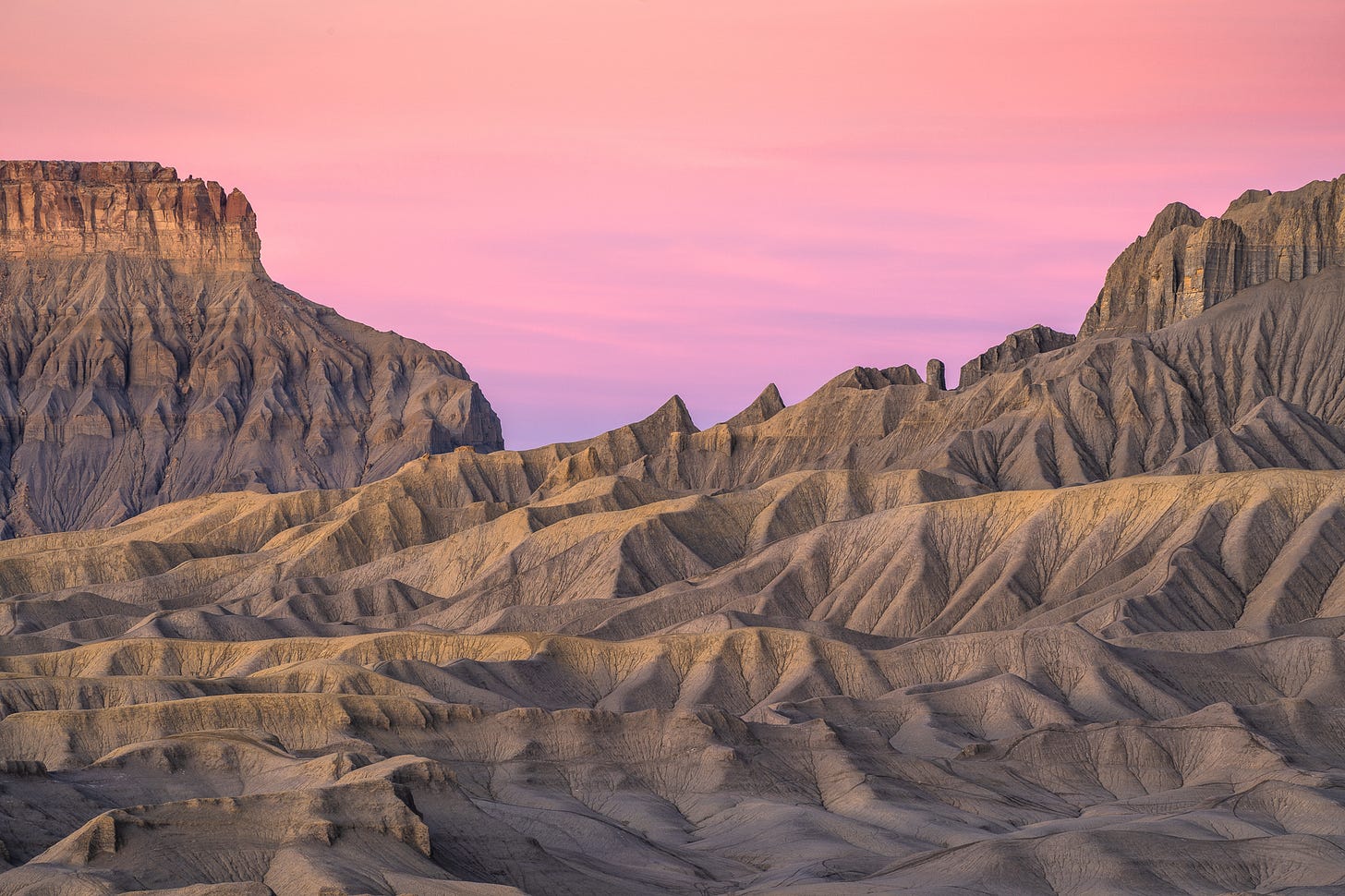

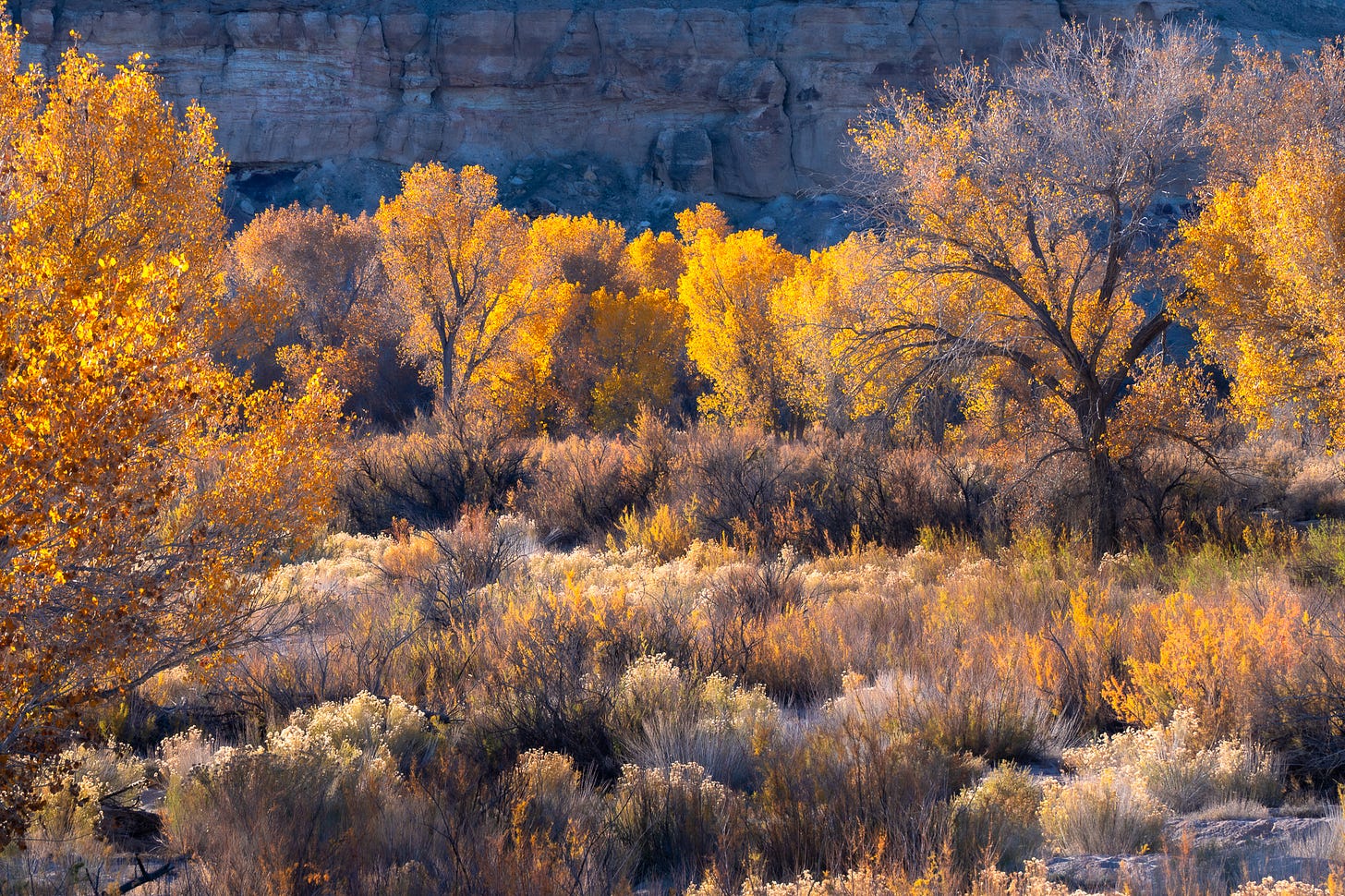
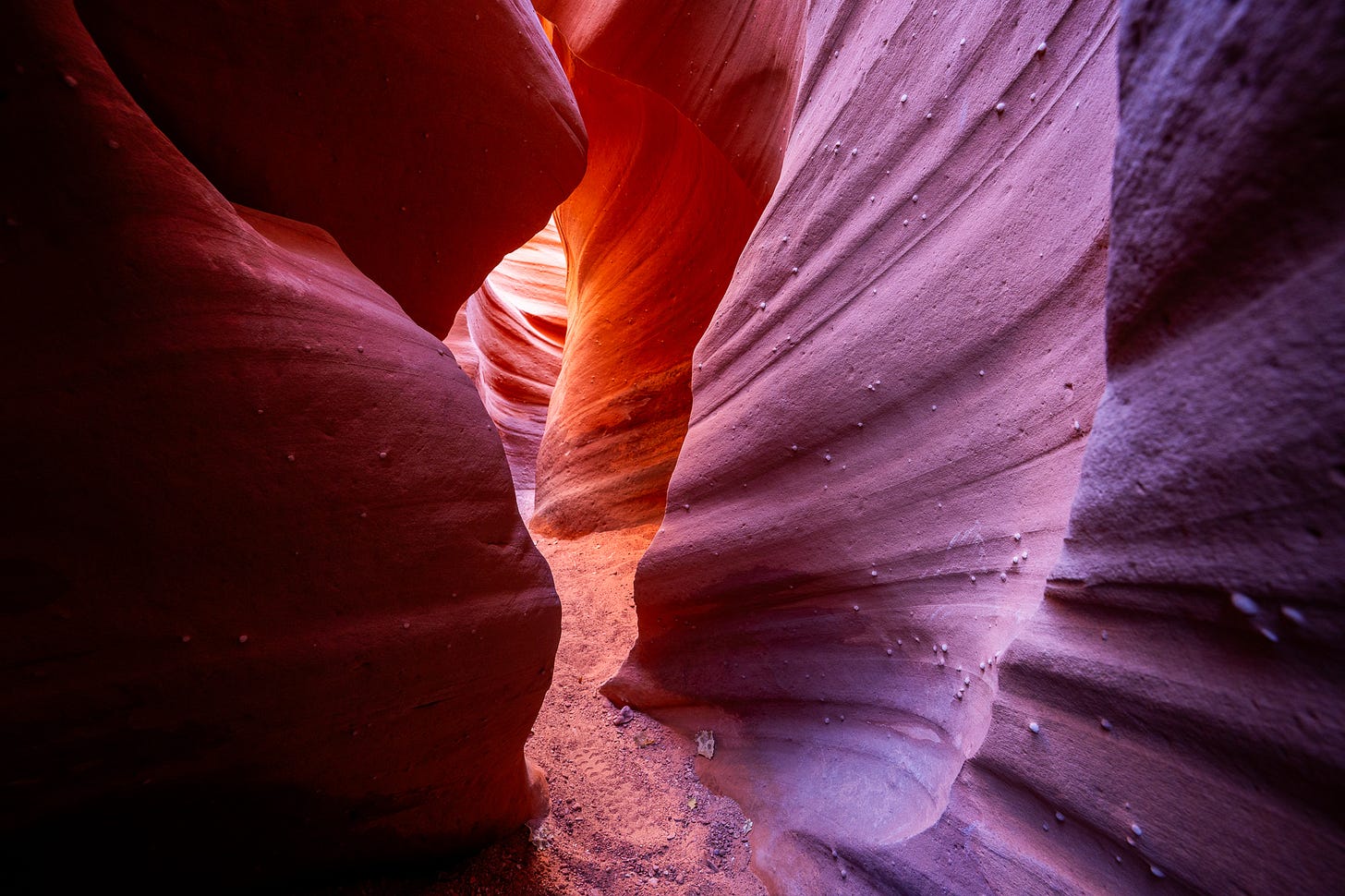

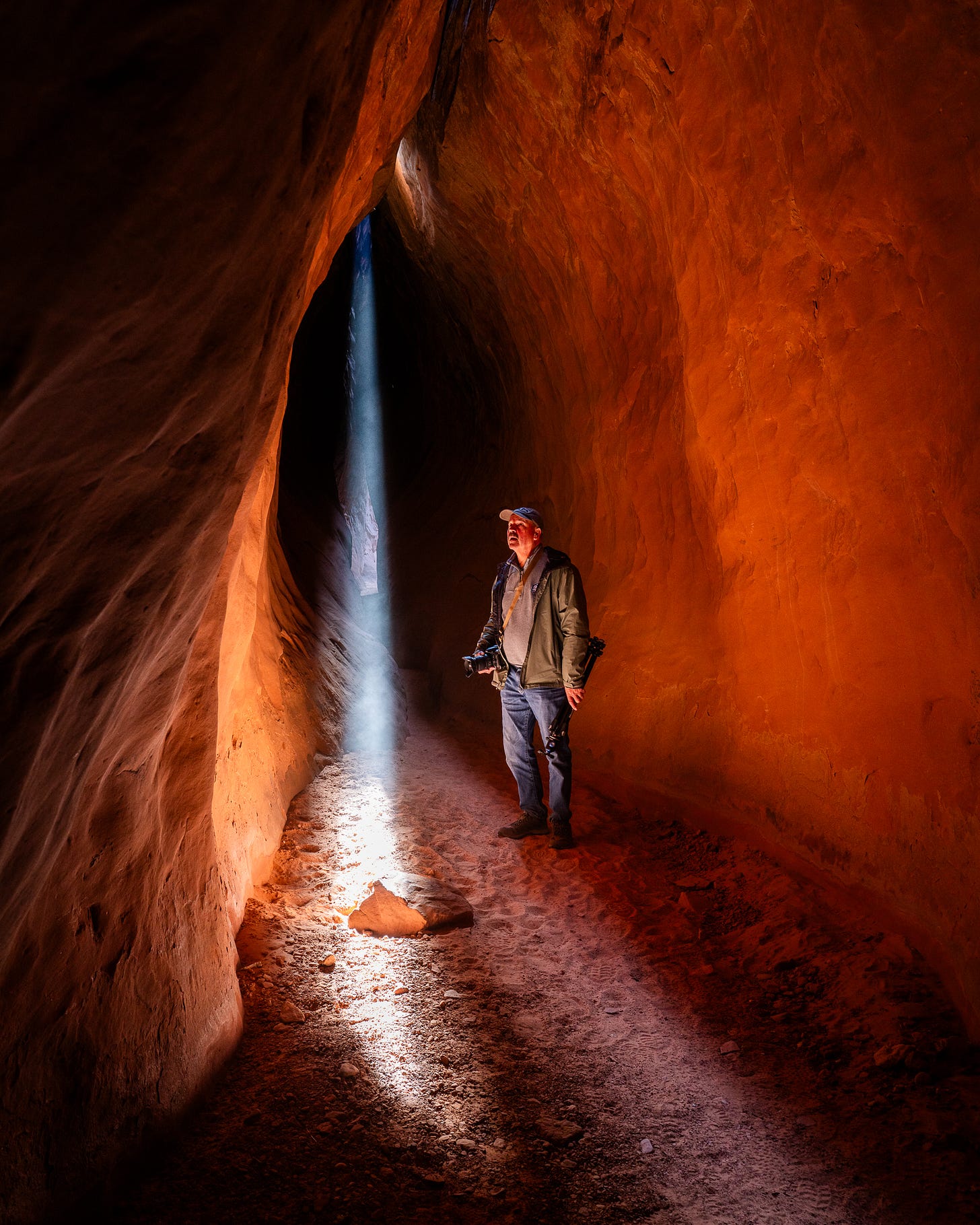
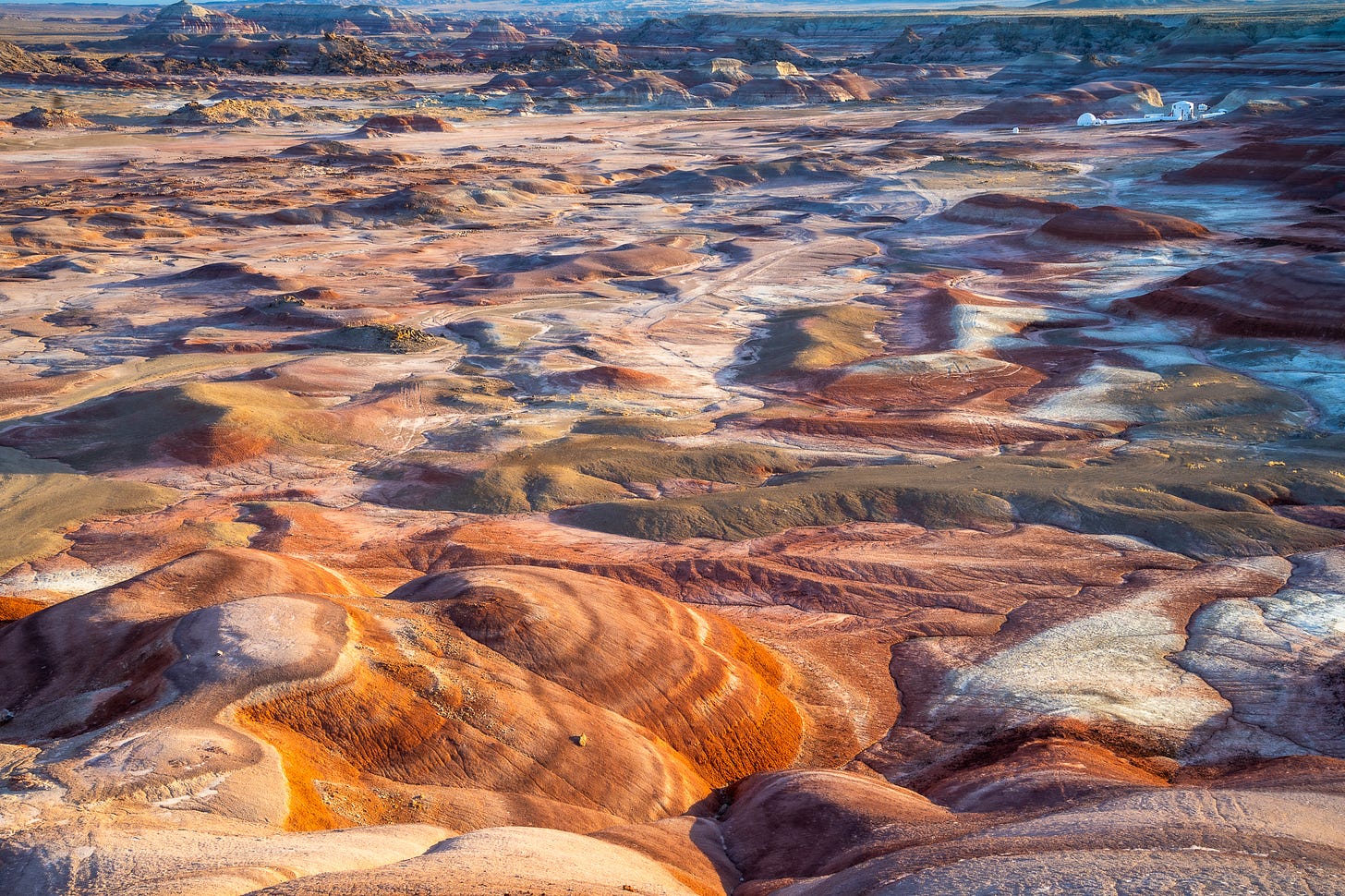


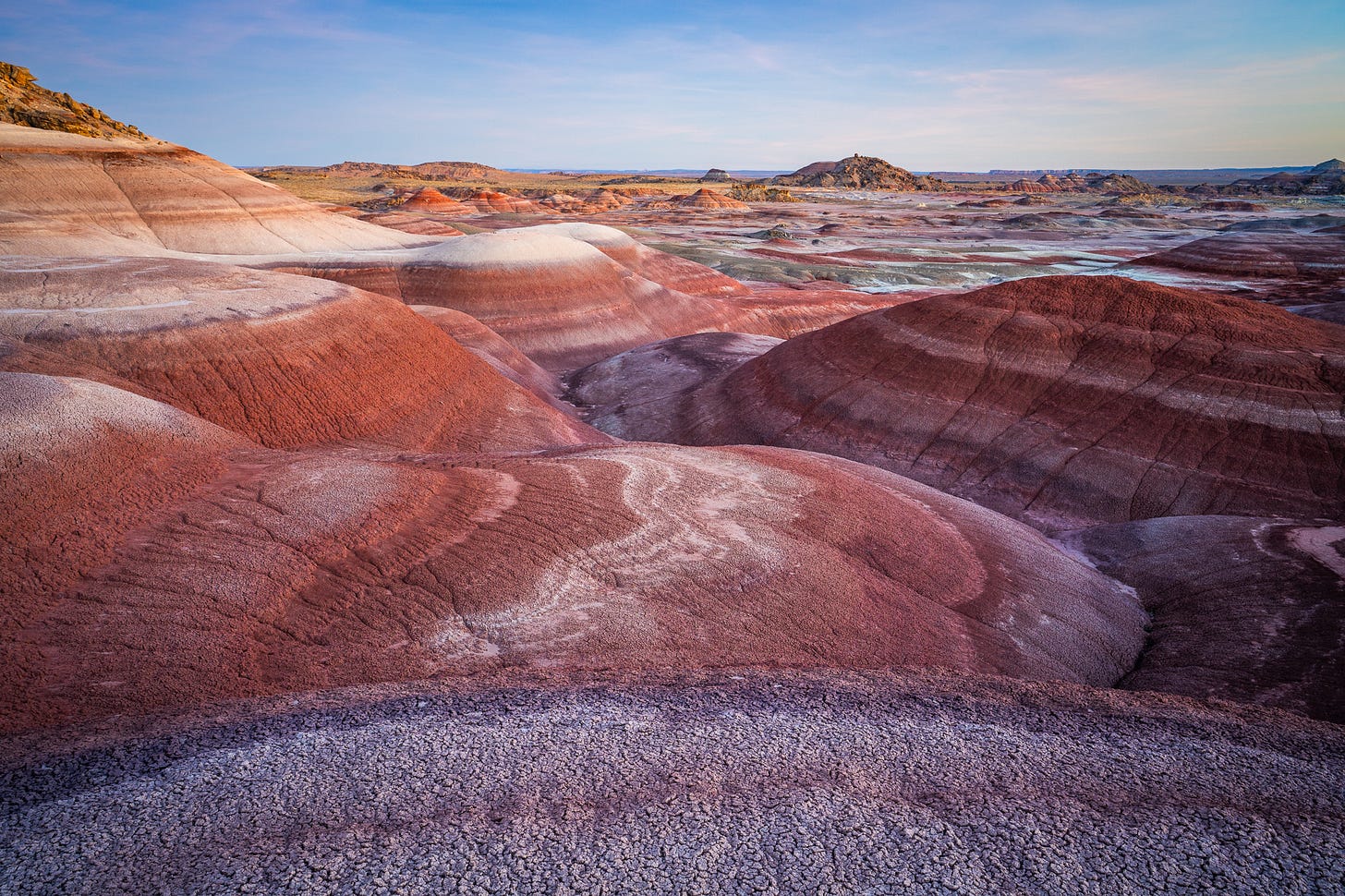
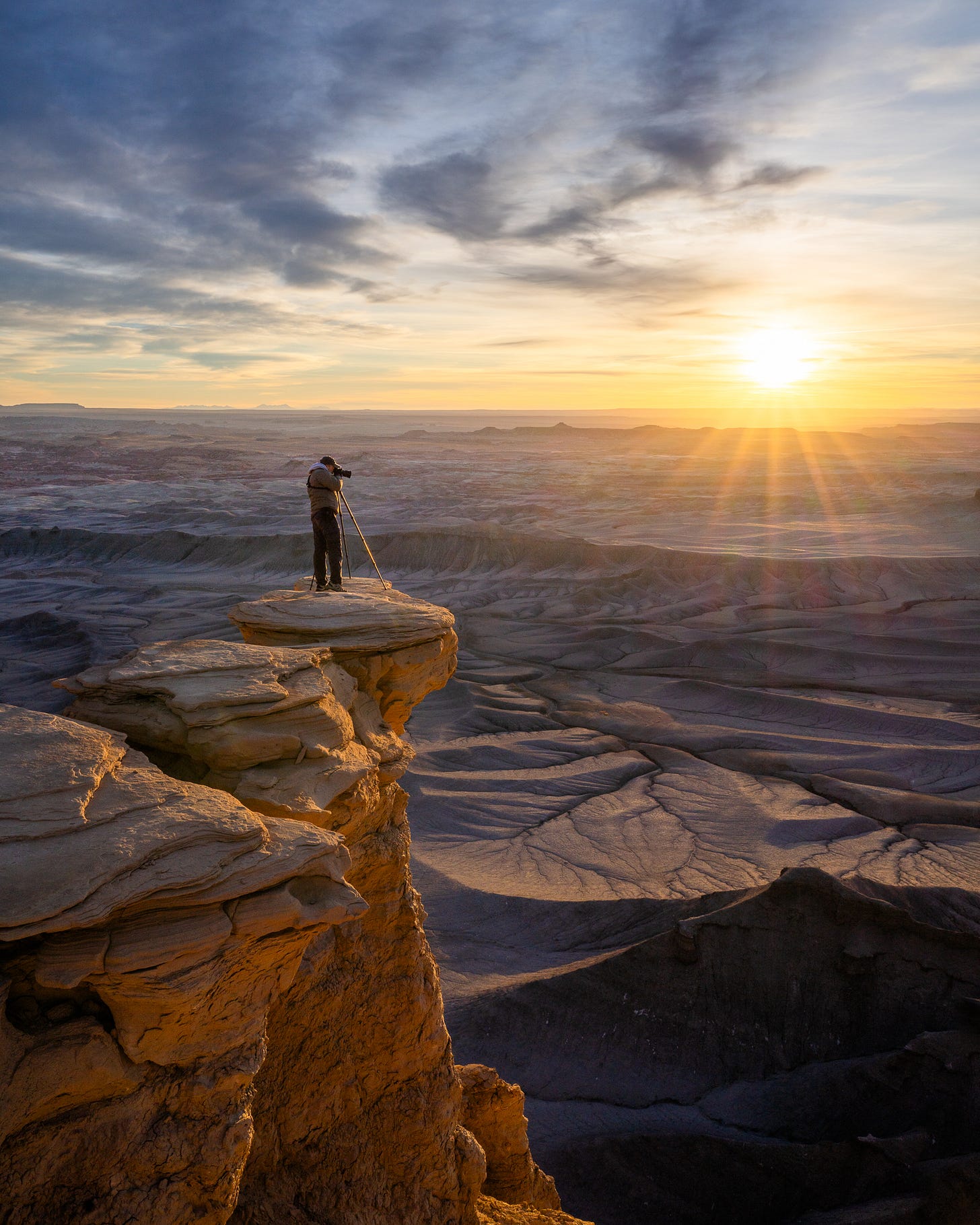
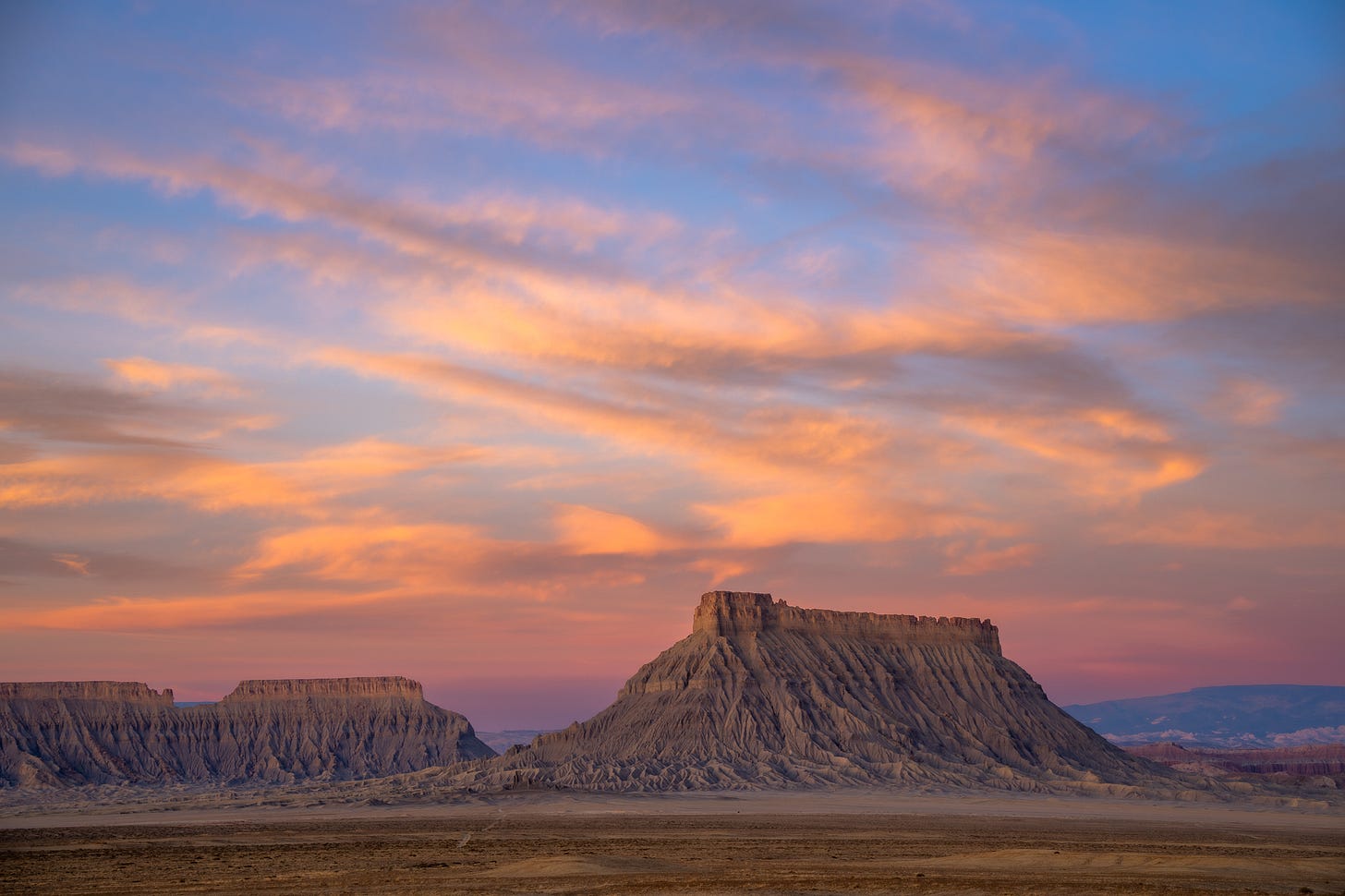
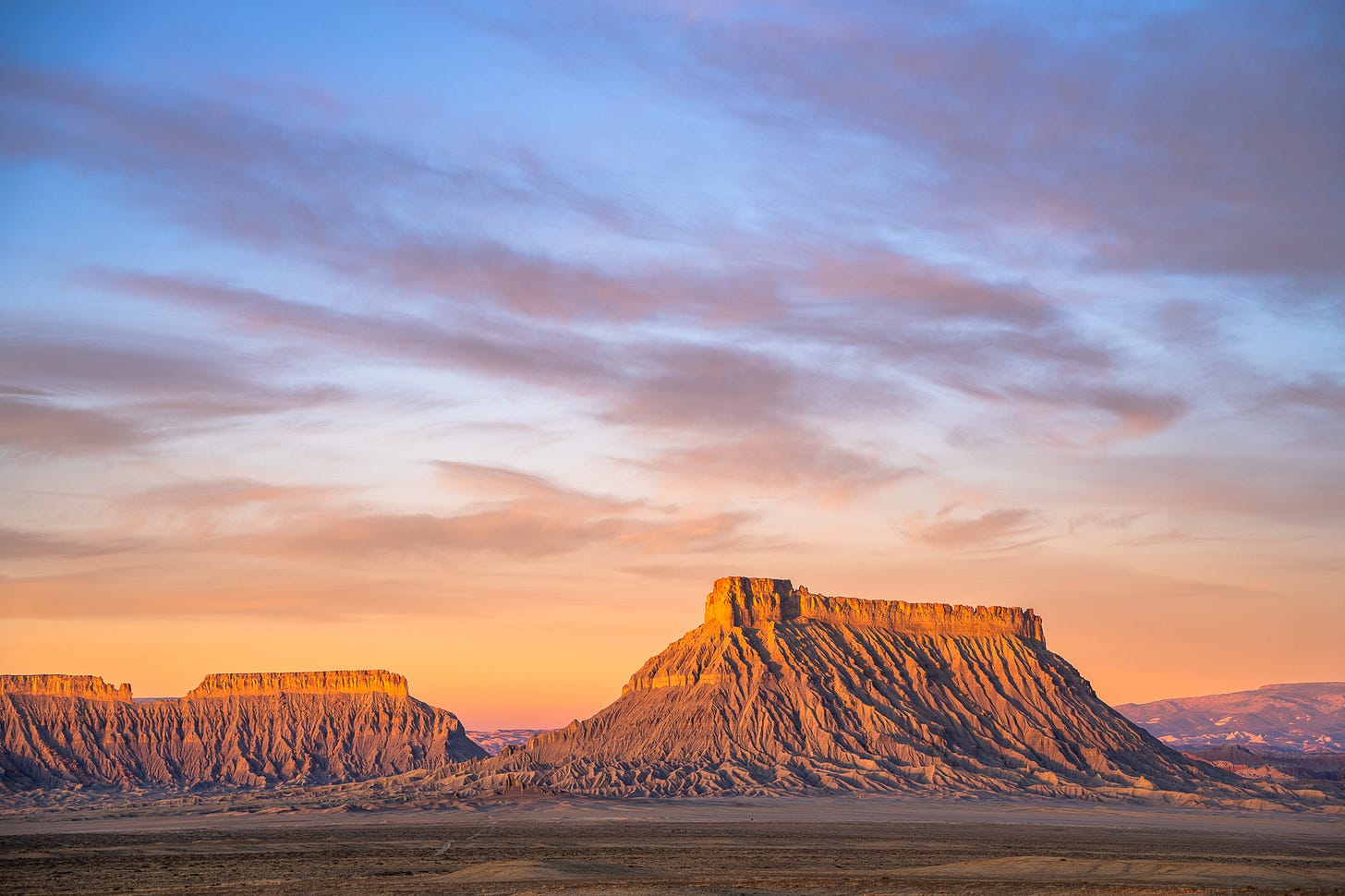
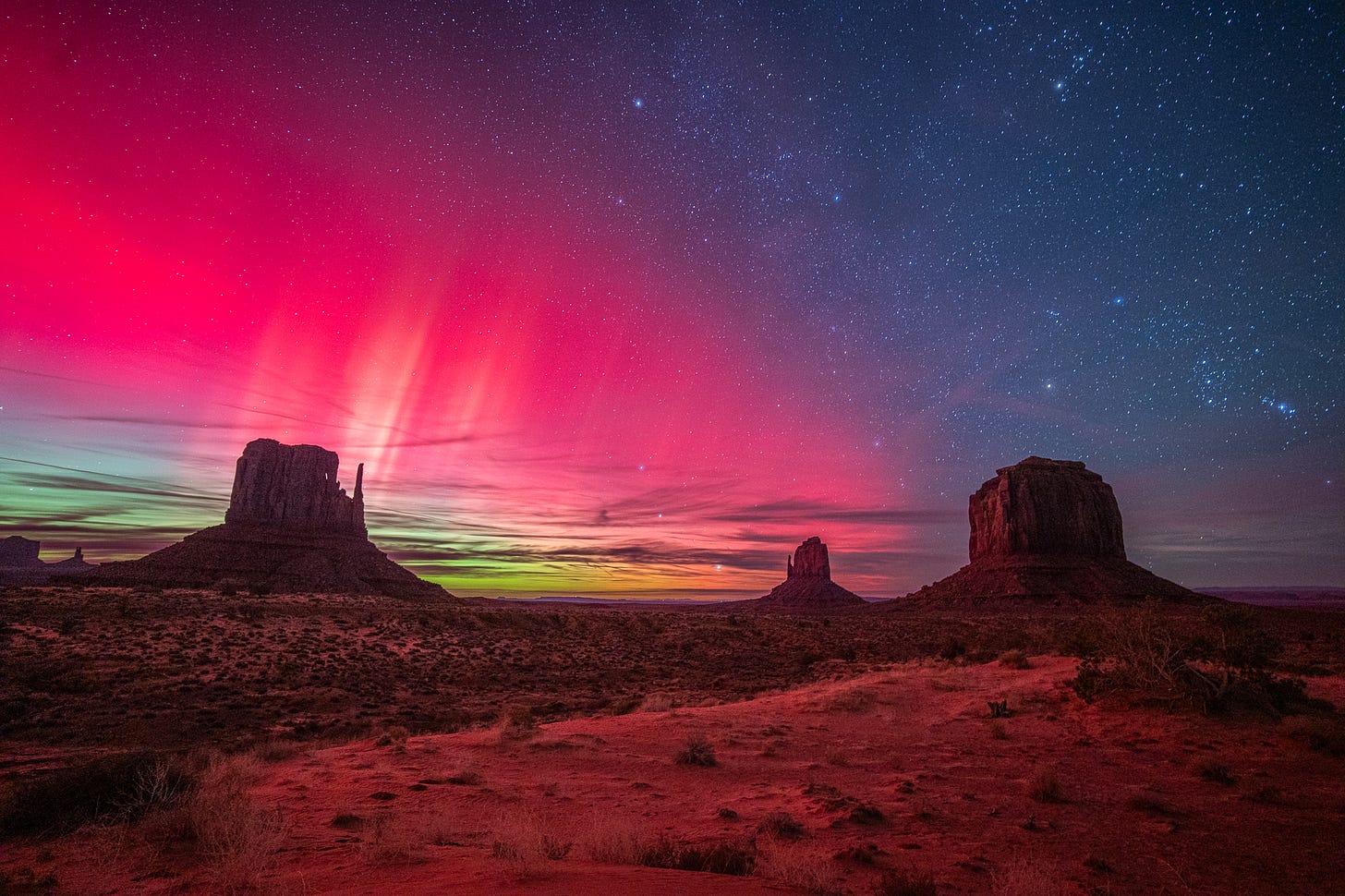

So completely different than trees and oceans of New England. You tell a great story with with these images and your prose. Thank you for sharing.
What a gorgeous place, and you've captured its beauty perfectly! As I'm writing my post on The Science of Blue Mind and the positive effects oceans and bodies of water have on the nervous system, I'm trying to find science on what you can do to achieve the same effects if you don't live near water. I think I've found it here in your pictures. I'll bet the minerals in the air from those gorgeous rocky landscapes have a miraculous effect, not to mention the beauty of it all!